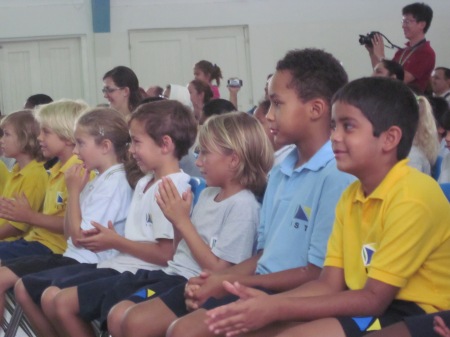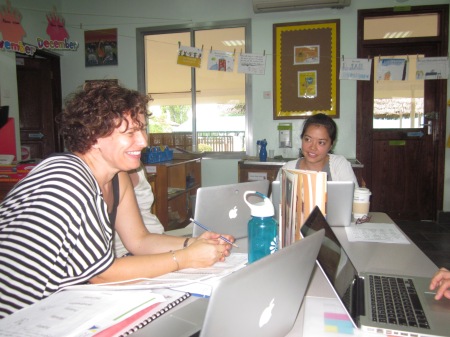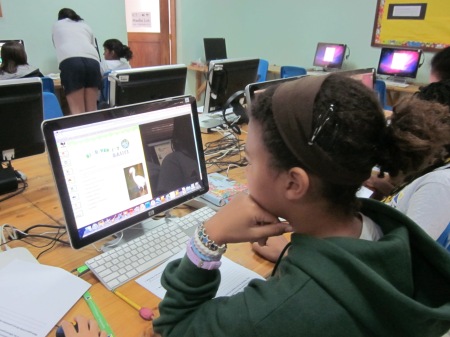 As we continue to focus on the learner profile attribute “communicators” this November, it might be opportune to share with you a newly documented section of our curriculum. Our end of year expectations for oral language have been incorporated into a new continuum covering all aspects of communication.
As we continue to focus on the learner profile attribute “communicators” this November, it might be opportune to share with you a newly documented section of our curriculum. Our end of year expectations for oral language have been incorporated into a new continuum covering all aspects of communication.
This continuum focuses not only on oral language (listening and speaking) but acknowledges that communication is also visual, and identifies the strand” viewing and presenting”.
Speaking and listening combine into a transactional process. Listening involves more than just hearing sounds. It requires active and conscious attention in order to make sense of what is heard. Purposeful talk enables learners to articulate thoughts as they construct and reconstruct meaning to understand the world around them. “In an inquiry-based learning environment, oral language exposes the thinking of the learner.”
Presenting and viewing involves interpreting, using and constructing visuals and multimedia, allowing students to understand the ways in which images and language interact to convey ideas, values and beliefs. Visual text includes advertisements, brochures, computer games and programmes, websites, movies, posters, signs, logos, flags, maps, charts, graphs, diagrams, illustrations, graphic organisers, cartoons and comics. Learning to interpret this data, and to understand and use different media, are invaluable life skills.
As I wandered around school this week on a quest to find and document communication in action, I saw and heard examples of both expressive (creating and sharing meaning) and receptive (receiving and construction meaning) communication – a glimpse of which is captured here (and not just from students!). The statements in italics are examples of learning expectations from our new communication continuum.
 Hanging out! Begins to listen attentively, and speak appropriately, in small and large group situations
Hanging out! Begins to listen attentively, and speak appropriately, in small and large group situations
 Figuring out together how to make Rangoli patterns: Uses questions to inquire, probe and clarify to enhance understanding
Figuring out together how to make Rangoli patterns: Uses questions to inquire, probe and clarify to enhance understanding
 Performing in assembly! Uses performances to tell stories about people and events from various cultures, including their own.
Performing in assembly! Uses performances to tell stories about people and events from various cultures, including their own.
 Being a good audience: Displays audience etiquette and appropriate responses
Being a good audience: Displays audience etiquette and appropriate responses
 Giving directions: Uses gestures, actions and body language with words to communicate
Giving directions: Uses gestures, actions and body language with words to communicate
 Learning in other languages: Follows classroom directions and routines, using context cues
Learning in other languages: Follows classroom directions and routines, using context cues
 Responding to questions: Listens appreciatively and responsively, presenting their own point of view, and respecting the views of others.
Responding to questions: Listens appreciatively and responsively, presenting their own point of view, and respecting the views of others.
 Planning collaboratively: Works cooperatively towards a common goal, taking an active part in a creative experience.
Planning collaboratively: Works cooperatively towards a common goal, taking an active part in a creative experience.
 Saying goodbye: Uses language to address needs, express feelings and opinions
Saying goodbye: Uses language to address needs, express feelings and opinions
 Writing signs and messages: Selects and incorporates colours, shapes, symbols and images into visual presentations
Writing signs and messages: Selects and incorporates colours, shapes, symbols and images into visual presentations
 Viewing on the internet: Views visual information and shows understanding by asking relevant questions and discussing possible meanings
Viewing on the internet: Views visual information and shows understanding by asking relevant questions and discussing possible meanings
 Sharing your principles! Uses language to address needs, express feelings and opinions
Sharing your principles! Uses language to address needs, express feelings and opinions
Please share your own experiences and ideas about what good communicators by leaving a comment here, or by emailing me at scook@istafrica.com .
References:
Making the PYP Happen in the Classroom (IBO 2009)
IST Communication Continuum






I left a comment before about how much I liked your posts, but I don’t see it anywhere, so don’t know if it went through. Your posts are very informative, and it’s nice to see the PYP in action. It’s giving me a much better understanding of the program. Thanks!